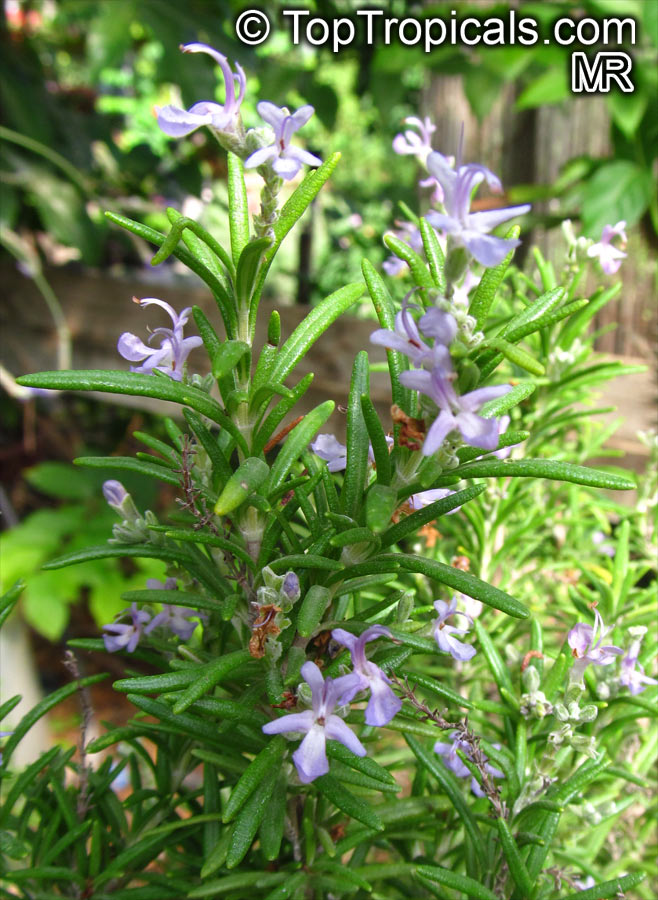Salvia rosmarinus (Rosemary)
Top Tropicals Plant Encyclopedia
Botanical names: Salvia rosmarinus, Rosmarinus officinalis
Common name: Rosemary
Family: Lamiaceae
Origin: Mediterranean










Salvia rosmarinus (Rosemary) is a plant that is best suited for USDA hardiness zones 8-10. It grows well in a sunny position and attracts butterflies and hummingbirds. Rosemary has several ethnomedical applications and is commonly used as a spice or herb, as an ornamental foliage, and as a fragrant potpourri component.
Originally native to the Mediterranean, Rosemary, or Salvia rosmarinus, is a perennial that forms an evergreen shrub. It can grow up to 5 feet in height. The small two-lipped flowers bloom in shades of blue, lavender, and purple in early summer, and as the shrub matures, the branches twist and turn to create a fascinating show.
Rosemary prefers dry, rocky, limy soil with good drainage and should be planted in a sunny spot. In cold climates, it can be kept in a pot and requires pruning once flowers have faded. The shoots should be cut back about two-thirds to keep it looking neat and compact.
Rosemary is a great addition to any garden and is often used to attract butterflies and hummingbirds. In pot cultivation, it should have full sun exposure and moderate water. In winter months, more care should be taken if growing in cold regions; protection from the coldest temperatures and extra insulation may be necessary.
Similar plants: Salvia rosmarinus (Rosemary)
- Salvia argentea (Silver Sage)
- Salvia aurea (Brown Salvia)
- Salvia coccinea (Red Salvia)
- Salvia discolor (Andean Sage)
- Salvia dolomitica (South African Sage)
- Salvia elegans (Pineapple Sage)
- Salvia farinacea (Mealy Sage)
- Salvia guaranitica (Anise-scented Sage)
- Salvia hispanica (Chia)
- Salvia lanceolata (Rusty Sage)





